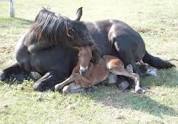Validation of IGG cut-offs in neonatal foals
Summary
Reasons for performing study
Serum immunoglobulin (IgG) assessment in neonatal foals is considered standard care in equine hospitals to determine immunity and overall health. However, cut-off values of IgG to predict complete or partial failure of transfer of passive immunity (FTPI) were developed 30 years ago and are largely empirical with little prospective or statistical data to support their use or association with outcome.
Objectives
To critically evaluate the traditional cut-off values of IgG in the assessment of FTPI (IgG <8 g/l), determine the association between various degrees of FTPI and likelihood of nonsurvival and examine whether FTPI can be predicted by serum total protein (TP), albumin and globulin in hospitalised foals.
Study design
Multicentre, cross-sectional study.
Methods
We evaluated clinicopathological variables in 597 foals ≤7 days old from 3 equine hospitals including serum IgG, fibrinogen, TP and albumin concentrations. Foals were divided into 3 groups by diagnosis: healthy, sick nonseptic and septic. The aforementioned variables in addition to globulin concentrations were evaluated in a subset of 118 foals. Univariate, multivariate and multinomial logistic regression were used to compute odds ratios for nonsurvival in these foals.
Results
Our findings support use of the traditional cut-off value of >8 g/l as adequate transfer of passive immunity (ATPI). Odds of nonsurvival increased in proportion to lower IgG concentrations. Higher TP concentrations were associated with lower likelihood of FTPI; however, higher albumin concentrations were associated with a greater likelihood of FTPI. A regression equation was created to predict IgG in foals using serum proteins.
Conclusions
Serum IgG values of <8 g/l in hospitalised foals were proportionally associated with mortality. We recommend immediate assessment of IgG concentrations in hospitalised foals and those with FTPI should receive prompt immunotherapy.
Click here to be directed to the study from the Equine Veterinary Journal.

